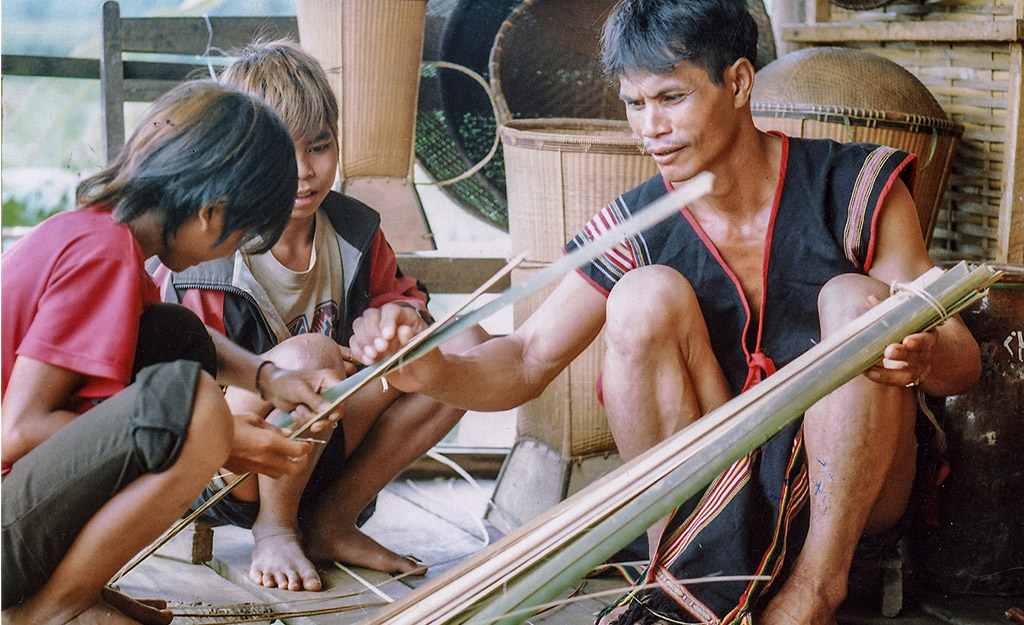Deputy Director, Culture and Youth Division, Ministry of Internal Affairs, Kingdom of Tonga
The two outcome objectives of the Tonga Strategic Development Framework 2011-2014 related to our mandate are to:
- strengthen inclusivity communities by engaging districts and villages/communities in meeting their prioritized service needs and ensuring equitable distribution of development benefits and
- increase cultural awareness, environmental sustainability, disaster risk management, and climate change adaptation by integrating these ideas into all planning and implementation of programs, by establishing and adhering to the appropriate procedures and implementation of programs, and by establishing and adhering to the appropriate procedures and consultation mechanisms.
The Kingdom of Tonga ratified the 2003 UNESCO Convention for the Safeguarding of the Intangible Cultural Heritage in April 2010. The importance of fulfilling the ratification requirements is leading us to have a system and procedure for raising public awareness of the importance of treasuring what they have in regards to their respective intangible and tangible cultural heritage. This is why it is necessary for us to access international and regional assistance to learn about sharing information and networking with those who have successfully completed the assigned tasks in respective areas. The first thing to have in place is the legal framework, which can empower us with is the expected foundation through which we can focus and document the elements we shall safeguard in a very systematic manner so that these elements can be kept and passed from one generation to the next.
The Culture and Youth Division of the Ministry of Internal Affairs is the leading agency to make the inventory. One of our key achievements for 2013 was the launching of the National Cultural Policy by Her Majesty Queen Nanasipau’u, which was held at the Fa’onelua Convention Centre on 16 July 2013.
The Cultural Mapping, Planning, and Policy project started in 2010 and was funded by the European Union via the Secretariat of the Pacific Community, Suva, Fiji. The technical assistance was provided by Dr Seu’ula Fua, Director of Institute of Education, University of the South Pacific, Tonga Campus. Dr Fua was working closely with a national task force that was chaired by Lord Vaea, who is now the Minister of Internal Affairs. The members of the task force were selected from representatives of the five main areas of the national cultural policy. The main five areas of the national cultural policy are:
- protect the foundation of Tongan culture,
- protect the land,
- protect and promote culture through education,
- protect and promote Tonga’s cultural industries, and
- strengthen the government’s role in the management and promotion of the culture sector.
Safeguarding intangible cultural heritage is under Policy Area 1. This policy empowers us to complete appropriate tasks required for us to educate people of the community of the importance of safeguarding our respective intangible cultural heritage.
Upon the approval of the national cultural policy, a national task force for intangible cultural heritage was created, and it is chaired by the Chief Executive Officer, Ministry of Internal Affairs. The members of the task force were selected by local experts according to the five domains of the 2003 Convention. Additional members of the task force are the Solicitor General from the Office of the Attorney General and the Secretary-General of the Tonga National Commission of UNESCO.
The Culture and Youth Division has just now completed transcribing the data that was collected in the past years. It is important for us to know what information has been collected to avoid duplication. This information has been compiled and documented, and it is currently being housed in our office. Collecting this information was made possible through the kind and generous assistance of ICHCAP.
A draft national inventory form was submitted at the first meeting of the national task force as an informational document. The task force provided their comments, and there is a lot to improve, and there is a need to translate to the form into the native languages. This will help the people at the community and grassroots level to understand thoroughly of what is expected and required of them.
Tonga was very fortunate to attend the inventory-making workshop that was funded by CRIHAP last year. The two experts who taught us during this one-week program were willing to assist us in refining the inventory form. We have since met in Suva, Fiji, during the Pacific World Cultural Heritage workshop from 27 to 29 November 2013, and this gave us an opportunity to finalize the form, and then we proceeded with the translation.
It is very true that inventorying processes need to be participative and inclusive. The process of identifying and inventorying may thereby help to establish good relationships among communities. At the same time, the inventorying process may contribute to safeguarding intangible cultural heritage as well as, more broadly, to sustainable development, good governance, social cohesion, and community building. Identifying ICH bearers is another important thing to do because once we lose them, then we may not be able to have correct information on hand.
To conclude, we are still in the early stages of making the inventory in Tonga, but our intention is to start with Tongatapu (the main island) prior proceeding to the outlying districts.







